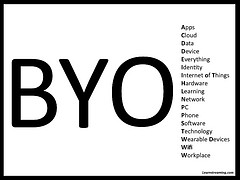Better late than never, right?
I am feeling a little stalled with my Masters Research and upcoming Literature Review.
My activity:
- I’ve downloaded about 15 articles
- I’ve read a few articles and skimmed many others
- I selected a citation tool! (That’s one for the “WIN” column!) Mendeley: free, easy, friendly, and shareable.
My inactivity:
- I am not even sure which articles have any value for my project or my Literature Review
- I have not been excited or inspired by any of the articles so far, except for a Lit Review from Great Britain from 2009. Too old.
- I feel like I am reading FOR something, but I am not sure exactly what it is
- Leftover from the summer sessions where I felt blindsided when I learned that the articles I had specifically selected from the University Library were not actually Peer Reviewed – although the Library had listed them as Peer Reviewed. I learned about this bizarre grey area where peer-reviewed and non-peer-reviewed articles cohabitate.
- I struggle with formulaic writing. I know that I can do it, no one my age can make it through high school without learning how to slap together an essay, but I need a formula that works for me. I don’t know what I am doing or how to start.
- My topic is still fuzzy. How can I start writing without a topic?
I’ve done everything to kick-start my process: web my ideas, journal informally, list ideas, re-list ideas, web my listed ideas, talk with people, read for more information, etc. I met with our professor earlier this month and she gave me great advice about telling my own story as part of this Masters project, and then looking for research to substantiate the actions or decisions that I made. Narrative writing makes me happy, and seems like a nice place to start. The most difficult thing about this is that I lost my “journals” about my process of initiating BYOD in my classroom last year when our blogs hosted at UVic were lost. Some of my most authentic reflections are gone. Those “in the moment” reflections are difficult to recreate.
I am excited about using Mendeley as a citation tool. A few of us got together to learn about it and will be blogging about it soon.
I’m not sure what to do next. Do I continue to read and hope something sparks? Do I continue to write sweet nothings on my so-called Lit Review? I know that I need to refine my keywords and pick a clear direction for selecting more articles to add to the pile. I also think that it is time to contact the UVic Research Librarian for help.
I also need to organize the articles I have printed. How much information do I need to keep with these articles? I believe that I need to have the location they were retrieved from and the search terms used. Anything else?
Taking some advice from Tracey Thorne means that my next step is to read, read, read and look for themes. It’s nice to have a plan.

